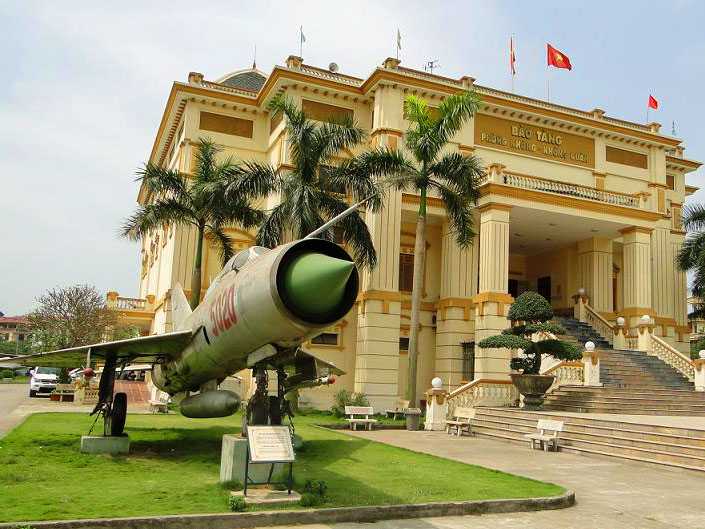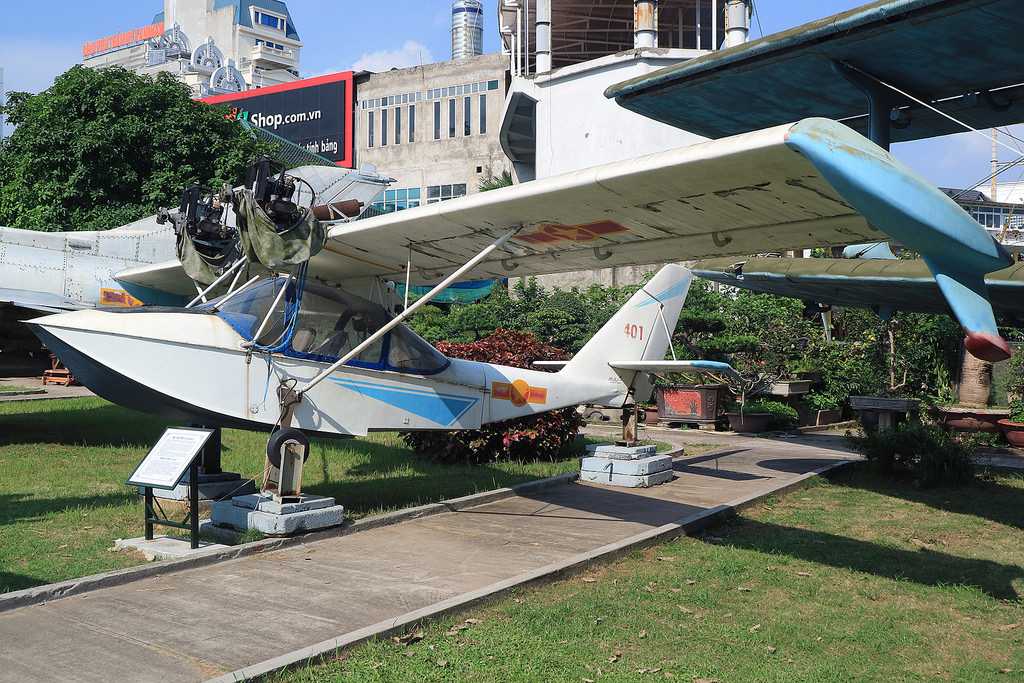Vietnamese Air Force Museum
Label : Fun For Kids
Tags : Museum
Time Required : 1 - 2 hours
Ways to Experience this attraction
Vietnamese Air Force Museum, Hanoi Overview
The Vietnamese Air Force Museum tells the story of the Vietnam People's Air Force from its formation in 1954 uptil today. It displays the history through documents, biographies, photographs, uniforms, weapons, engines and other exhibits. Outside the museum stand jet fighters, helicopters, tanks and other ground vehicles. It's a must visit for anyone interested in Vietnam's Air Force history or aviation in general.
The Vietnamese Air Force Museum, locally known as Bao Tang Phong Khong - Khong Quan, can be found on Truong Chinh Street of Hanoi. It lies on one side of the redundant airfield of Bach Mai. The museum is an interesting place to visit for people who happen to be interested in the history of aviation and war planes. It houses an amazing collection of artifacts, documentaries and old airplanes used by the 'Vietnam People's Air Force (VPAF).' The museum lays emphasis on the VPAF and depicts its history from its formation in 1954 to date. However, more stress has been given to the historical events pertaining to the Second Indo-China War as well as the Cambodian-Vietnamese War.

The main building of the Vietnam Air Force Museum contains multiple documents reporting the historical events associated with the VPAF along with the biographies of the Air Force heroes. Weapons used in the wars and the flight suits are on display here as well. The local people take pride in seeing several items recovered from the US Aircrafts that had been shot down by the VPAF. War enthusiasts are also intrigued to find the fuselage of a MiG-21 aircraft showcased here. Interestingly, the visitors are permitted to enter it for being photographed.

Helicopters Used by the VPAF and in Wars (Source)
Surprisingly, the museum is not limited to displaying the war relics either. The sight of a space capsule utilized for carrying the first Vietnamese astronaut leaves the visitors dumbfounded too. The heroic deeds of the VPAF Pilots have been systematically documented with their tales being described in Vietnamese as well as English.

The area just outside the museum building has been converted into an aircraft park containing multiple aircrafts that had been employed both by the VPAF and the 'Republic of Vietnam Air Force.' The visitors are interested to view numerous anti-aircraft guns, missiles as well as several American wreckages that had been retained as trophies by the winning side. It might be difficult to note the make of each airplane unless one happens to be an avid follower of aircrafts utilized during the aforementioned wars. History buffs would be pleased to find snippets of information about the glorious role played by each aircraft during the war displayed in an attached panel.
How to Reach Vietnamese Air Force Museum

Vietnam (Source)
The Vietnamese Air Force Museum is located at Ton That Tung Road in Khu'o'ng Mai of the Thanh Xuan district in Hanoi. One can easily reach the gate of the Museum in 20 minutes by taking a metered taxi from the Old Quarter. Buses 16A & 16B pass via the Truong Chinh Street as well making it easier for the tourists to visit the museum when travelling on a shoestring budget.

Vietnamese Air Force Museum happens to be one of the most interesting places to visit in Hanoi. It traces the history of the Vietnam People's Air Force (VPAF) with the aid of artifacts, photographs and documents.
Read More on Vietnamese Air Force Museum
How to Reach Vietnamese Air Force Museum

Vietnam (Source)
The Vietnamese Air Force Museum is located at Ton That Tung Road in Khu'o'ng Mai of the Thanh Xuan district in Hanoi. One can easily reach the gate of the Museum in 20 minutes by taking a metered taxi from the Old Quarter. Buses 16A & 16B pass via the Truong Chinh Street as well making it easier for the tourists to visit the museum when travelling on a shoestring budget.

Vietnamese Air Force Museum happens to be one of the most interesting places to visit in Hanoi. It traces the history of the Vietnam People's Air Force (VPAF) with the aid of artifacts, photographs and documents.